What is On-Page SEO and Why is it Important?
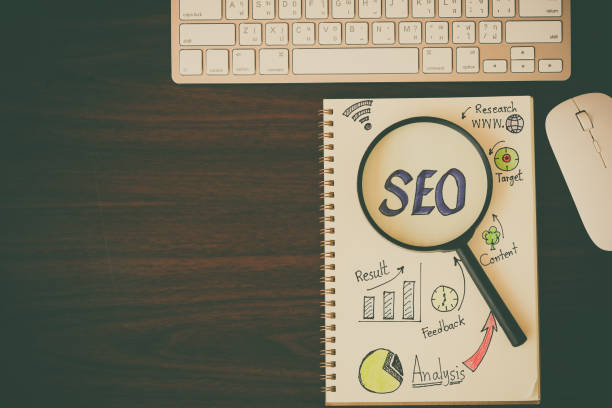
What is On-Page SEO and Why is it Important?
#On-Page SEO, or On-Page SEO, refers to a set of actions you perform within your website to improve its ranking in search engines like Google.
These actions include optimizing content, site structure, HTML tags, and other internal site elements.
The importance of on-page SEO stems from the fact that search engines use these factors to understand the topic and quality of web pages.
In other words, on-page SEO helps search engines understand what your site is about and whether its content is valuable to users.
In fact, without proper on-page SEO, even if you produce the best content, you might not achieve a good ranking in search results.
This is because search engines cannot properly understand your content.
On-page SEO allows you to have more control over how your site appears in search results and attract more organic traffic to your site through proper optimization.
On-page SEO is a continuous process and requires constant review and updating.
Website on-page SEO helps businesses to be seen higher in search results, leading to increased conversion rates and sales.
In summary, on-page SEO helps you to:
- Improve your site’s ranking in search engines.
- Attract more organic traffic to your site.
- Provide a better user experience for visitors.
- Increase your conversion rate and sales.
To achieve these goals, you need to pay attention to various on-page SEO elements, which we will discuss next.
The most important principle in on-page SEO is to create high-quality content relevant to users’ needs.
Content that answers users’ questions and provides useful information.
Don’t have a corporate website yet and missing out on online opportunities? With professional corporate website design by RasaWeb,
✅ Double your business credibility
✅ Attract new customers
⚡ Free consultation for your corporate website!
Keyword Research and Choosing the Best Ones
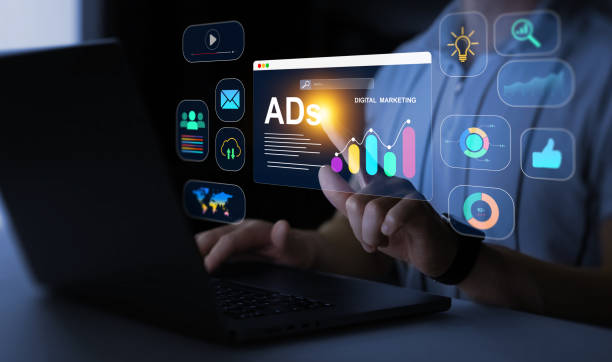
Keyword Research and Choosing the Best Ones
#Keyword research is one of the most important stages of SEO on-page optimization.
Keywords are the terms users use to search in search engines.
By identifying the right keywords, you can produce content that meets user needs and improve your site’s ranking in search results.
To start keyword research, you first need to prepare a list of topics related to your business.
Then, using various tools like Google Keyword Planner, Ahrefs, and SEMrush, find keywords related to these topics.
When choosing keywords, you should pay attention to a few points:
- Search Volume: The number of times a keyword is searched per month.
The higher the search volume, the more traffic you can receive from that keyword. - Competition: The level of competition for a keyword.
The higher the competition, the harder it is to get a good ranking for that keyword. - Relevance: The keyword must be relevant to your site’s topic.
Using irrelevant keywords can harm your site’s ranking.
After selecting keywords, you should use them naturally in your content.
Avoid over-stuffing content with keywords, as this can harm your site’s SEO.
Appropriate use of keywords in the page title, meta description, subheadings, and body text can help improve your site’s ranking in search results.
In fact, choosing the right keywords is the first step in optimizing content for search engines.
Optimizing Titles and Meta Descriptions
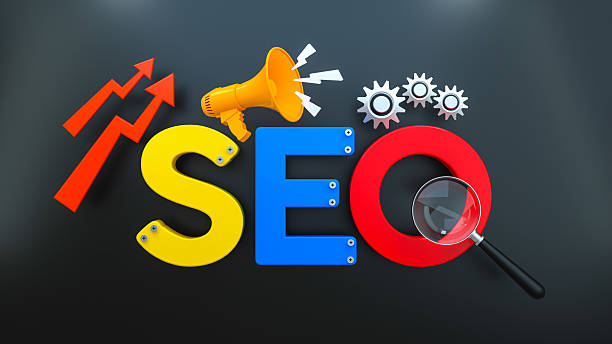
Optimizing Titles and Meta Descriptions
Titles and meta descriptions are the first elements users see in search results.
Therefore, optimizing them is crucial for attracting clicks and improving site ranking.
The page title (#Title Tag) should be short, engaging, and relevant to the page content.
It is best for the page title to include the main keyword of the page.
The length of the page title should be less than 60 characters to be fully displayed in search results.
Meta descriptions (#Meta Description) should be a summary of the page content and encourage users to click.
Meta descriptions should also include the main keyword of the page.
The length of meta descriptions should be between 150 and 160 characters.
Optimizing titles and meta descriptions helps search engines better understand page content and, consequently, improves your site’s ranking.
For example:
Title On-Page SEO Training – Comprehensive Guide
Meta Description In this article, we provide comprehensive and practical training on website on-page SEO.
Stay with us to improve your site’s ranking on Google.
Optimizing titles and meta descriptions is one of the key aspects of on-page SEO that can significantly impact your site’s organic traffic.
Additionally, titles and meta descriptions should be unique and optimized separately for each page of the site.
Using duplicate titles and meta descriptions can harm your site’s SEO.
| Element | Description | Best Practices |
|---|---|---|
| Page Title (Title Tag) | The page title displayed in search results. | Short, engaging, content-relevant, includes main keyword, max 60 characters |
| Meta Description | A summary of the page content displayed in search results. | Engaging, concise, includes main keyword, encourages clicks, 150-160 characters |
On-page SEO also helps improve user experience.
Clear and engaging titles and meta descriptions encourage users to click on your site’s link and enter the site.
This increases the click-through rate (CTR) and improves your site’s ranking in search results.
Content Optimization: The Key to Success in On-Page SEO

Content Optimization: The Key to Success in On-Page SEO
Content is King! This phrase is very common in the world of SEO and signifies the importance of content in on-page SEO.
High-quality and relevant content is the main factor for attracting organic traffic and improving site ranking in search results.
To optimize content, you should pay attention to a few points:
- Provide valuable and useful content: Your content should answer users’ questions and provide them with useful information.
- Use keywords naturally: Use keywords naturally in titles, subheadings, body text, and images.
- Structure content properly: Use titles and subheadings to divide content, making it easier for users to read.
- Use images and videos: Images and videos can make your content more engaging and help better understand the material.
- Optimize images: Reduce image file sizes and use alternative text (Alt Text) for them.
- Internal linking: Link to other pages on your site so users can easily navigate your site.
Producing high-quality and optimized content requires time and effort.
But the result will be increased organic traffic and improved site ranking in search results.
Website on-page SEO is practically impossible without high-quality content.
On-page SEO helps you optimize your content and show it to more users.
High-quality content not only helps improve your site’s ranking but also increases your brand’s credibility and user trust.
Are you dissatisfied with your e-commerce site’s low sales and not achieving your desired sales?
RasaWeb is your solution for having a professional and high-selling e-commerce site.
✅ Significant increase in sales and revenue
✅ Easy and enjoyable shopping experience for customers
⚡ Get a free consultation from RasaWeb now!
Proper URL Structure and Its Optimization

Proper URL Structure and Its Optimization
URL structure, or the address of web pages, is another important factor in on-page SEO.
URLs should be short, readable, and relevant to the page content.
Using keywords in URLs can help improve site ranking in search results.
URLs should be separated by hyphens (-) and avoid using special and unnecessary characters.
A proper URL structure helps search engines better understand page content and display it to users.
For example, instead of using obscure URLs like www.example.com/page?id=123, use readable and relevant URLs like www.example.com/on-page-seo-tutorial.
URLs should be designed so that users and search engines can easily identify the page content.
A proper URL structure helps users navigate your site easily and access the information they need.
To optimize URLs, pay attention to the following tips:
- Be short and readable.
- Include keywords.
- Use hyphens (-) to separate words.
- Avoid special and unnecessary characters.
- Be relevant to the page content.
By observing these tips, you can optimize your site’s URL structure and help improve your site’s on-page SEO.
On-page SEO requires attention to detail, and URL optimization is one of these important details.
Internal and External Linking: An Effective Strategy in On-Page SEO
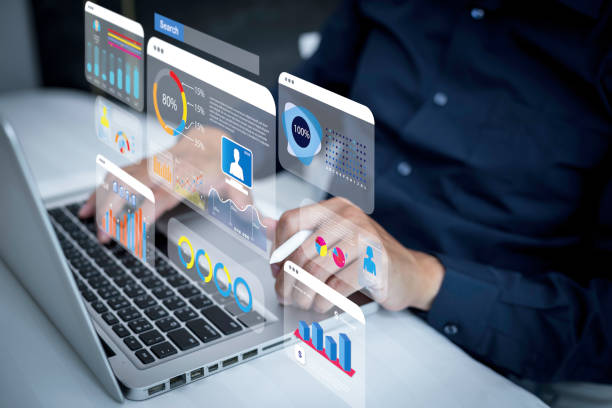
Internal and External Linking: An Effective Strategy in On-Page SEO
Internal and external linking is one of the most important strategies in on-page SEO.
Internal linking refers to linking from one page of the site to other pages on the same site.
External linking refers to linking from your site to other sites and vice versa.
Internal linking helps search engines better understand your site’s structure and helps users navigate your site easily.
External linking helps increase your site’s credibility and shows that your site references other reputable sources.
On-page SEO gains meaning with link building.
When linking, you should pay attention to a few points:
- Links should be relevant to the page content.
- Use appropriate anchor text.
- Link to important pages of the site.
- Link to reputable sites.
- Avoid broken links.
Internal and external linking helps improve your site’s ranking in search results and increases your site’s organic traffic.
On-page SEO will be incomplete without proper link building.
Also, remember that linking should be done naturally and avoid buying links and other illegal methods.
These methods may harm your site’s SEO.
Optimizing Images and Videos for SEO

Optimizing Images and Videos for SEO
Images and videos play an important role in the attractiveness and user engagement with website content.
However, for these elements to also help your site’s SEO, you need to optimize them.
Optimizing images and videos includes the following:
- Reduce image file size: Reduce image file size as much as possible to increase page loading speed.
- Use appropriate formats: Use JPEG for images and MP4 for videos.
- Use alternative text (Alt Text): Use appropriate alt text for images so that search engines can understand the image content.
- Appropriate file name: Use an appropriate file name relevant to the image content.
- Use appropriate titles and descriptions for videos: Use appropriate titles and descriptions for videos so that search engines can understand the video content.
- Use a video sitemap: Use a video sitemap to introduce your videos to search engines.
By optimizing images and videos, you can increase your site’s page loading speed, improve user experience, and help your site’s SEO.
Website on-page SEO is incomplete without paying attention to images and videos.
| Element | Description | Best Practices |
|---|---|---|
| Image Size | Image file size | Reduce size as much as possible, use compression |
| Image Format | Image file type | JPEG for photos, PNG for logos and high-quality images |
| Alternative Text (Alt Text) | Brief description of image content | Accurate and relevant description, includes keyword |
| File Name | Image file name | Relevant to content, use keywords |
On-page SEO and optimizing the visual elements of the site (images and videos) is a comprehensive solution for improving site ranking.
Improving Website Loading Speed: A Crucial Factor in On-Page SEO
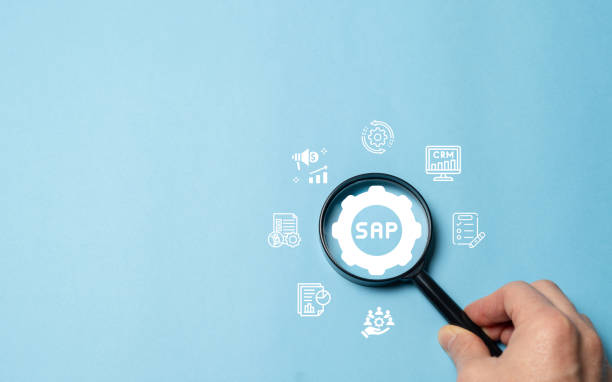
Improving Website Loading Speed: A Crucial Factor in On-Page SEO
Website loading speed is one of the most important factors in on-page SEO and user experience.
Users expect website pages to load within a few seconds.
If your site’s loading speed is slow, users will leave your site, and this will harm your site’s SEO.
Search engines also prioritize site loading speed, and sites with higher speeds achieve better rankings in search results.
On-page SEO enhances user experience by improving site loading speed.
To improve site loading speed, you can take the following actions:
- Optimize images: Reduce image file sizes and use appropriate formats.
- Use CDN: Use a Content Delivery Network (CDN) for faster content loading.
- Enable browser caching: Enable browser caching to store static site files in users’ browsers for faster page loading.
- Optimize code: Optimize your site’s HTML, CSS, and JavaScript code.
- Use appropriate hosting: Use high-quality and high-speed hosting.
By improving site loading speed, you can enhance user experience, reduce bounce rate, and help your site’s SEO.
On-page SEO and site loading speed are inseparable factors.
Are you concerned about your e-commerce site’s low conversion rate and not achieving your desired sales?
RasaWeb is your specialized solution for having a successful e-commerce site.
✅ Significant increase in conversion rate and sales
✅ Professional and user-friendly design to satisfy customers
⚡ Ready for a transformation in online sales? Get a free consultation!
Responsive Design and Mobile Compatibility

Responsive Design and Mobile Compatibility
Today, most users access the internet via mobile phones.
Therefore, responsive design and mobile compatibility are among the most important factors in on-page SEO.
Responsive design means that your site automatically adapts to the screen size of various devices (mobile, tablet, desktop).
If your site is not responsive, mobile users will have a poor user experience, and this will harm your site’s SEO.
Search engines also prioritize responsive sites and display them higher in search results.
On-page SEO is practically useless without responsive design.
To make your site responsive, you can use CSS frameworks like Bootstrap or entrust your site design to a web design specialist.
Responsive design and mobile compatibility help improve user experience, reduce bounce rate, and improve site ranking in search results.
On-page SEO and responsive design are two sides of the same coin.
On-page SEO helps you optimize your site for mobile and attract more traffic from mobile users.
Continuous Review and Improvement of Website On-Page SEO
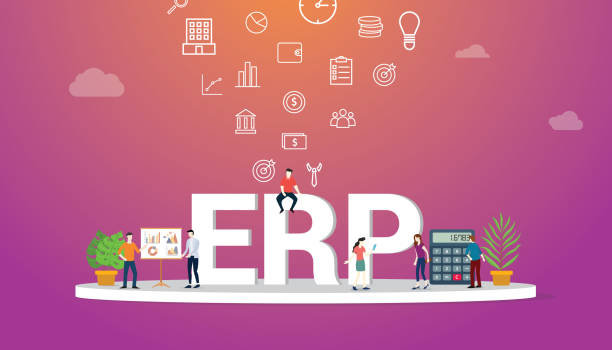
Continuous Review and Improvement of Website On-Page SEO
On-page SEO is a continuous process and requires constant review and improvement.
To ensure the performance of your site’s on-page SEO, you should regularly review your site’s status and identify its weaknesses.
For this, you can use various tools such as Google Analytics and Google Search Console.
These tools help you track your site’s traffic, identify the keywords users use to reach your site, and find technical issues with your site. On-page SEO should always be reviewed.
After identifying weaknesses, you should take action to address them.
For example, if you notice that your site’s loading speed is slow, you should take steps to improve it.
Or if you realize you haven’t chosen appropriate keywords, you should re-evaluate your keywords.
On-page SEO needs continuous review and updates.
By continuously reviewing and improving your site’s on-page SEO, you can improve your site’s ranking in search results and attract more organic traffic to your site.
On-page SEO is an iterative process and requires patience.
On-page SEO helps you continuously optimize your site and stay ahead of your competitors.
Frequently Asked Questions
| Question | Answer |
|---|---|
| What is On-Page SEO? | Refers to the set of actions performed within a website to improve its ranking in search engines. |
| Why is On-Page SEO important? | Because it helps search engines better understand your site’s content and structure and improves user experience. |
| What are the most important elements of On-Page SEO? | Title and meta descriptions, keywords, URL structure, quality content, image optimization, internal linking, and site speed. |
| How to optimize Title Tag and Meta Description? | The title should be engaging and include the main keyword, and the meta description should be a compelling summary of the content with relevant keywords. |
| What is the role of keywords in On-Page SEO? | Keywords help search engines understand what the page content is about and should be used naturally and intelligently within the text. |
| How is image optimization done for On-Page SEO? | By compressing size, using descriptive file names, and filling the Alt tag with relevant descriptions and keywords. |
| What is Internal Linking and what is its use? | It is connecting different pages of the site to each other. This helps distribute Page Authority and improve search engine crawling. |
| What is the importance of site loading speed in On-Page SEO? | High speed improves user experience and is an important ranking factor for search engines like Google. |
| What is the impact of site Responsiveness (Mobile-Friendliness) on On-Page SEO? | Given the increase in mobile users, responsiveness is essential for providing a good user experience on all devices and for Google’s mobile-first indexing priority. |
| What are the important content-related factors in On-Page SEO? | Originality, quality, comprehensiveness, readability, proper use of headings (H1, H2,…), and regular content updates. |
And other advertising agency services by RasaWeb in the field of advertising
- Smart Social Media: A professional solution for increasing sales with a focus on intelligent data analysis.
- Smart Social Media: A new service for increasing user engagement through SEO-driven content strategy.
- Smart Sales Automation: A fast and efficient solution for increasing click-through rates with a focus on attractive user interface design.
- Smart Content Strategy: Professional optimization for customer behavior analysis using user experience customization.
- Smart Sales Automation: A new service for increasing sales through marketing automation.
And over hundreds of other services in the field of internet advertising, advertising consultation, and organizational solutions
Internet Advertising | Advertising Strategy | Advertorials
References
Website On-Page SEO ChecklistOn-Page and Off-Page SEO TrainingComplete Guide to On-Page SEO in 2023The Importance of Internal Linking in SEO
? To achieve peaks of success in the digital world, RasaWeb Digital Marketing Agency, specializing in SEO, content marketing, and multilingual website design, paves the way for your business growth.
📍 Tehran, Mirdamad Street, next to Central Bank, Southern Kazeroun Alley, Ramin Alley, No. 6

